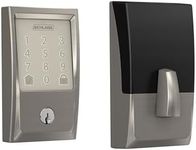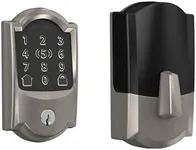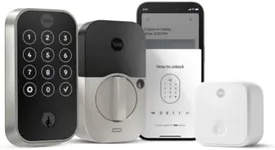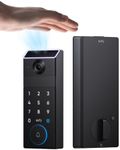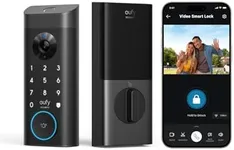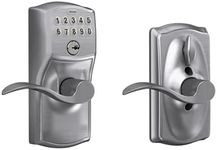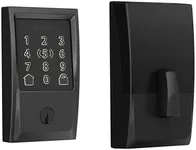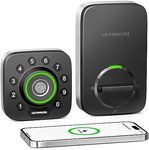Buying Guide for the Best Smart Locks
Choosing a smart lock is about finding the right blend of security, convenience, and compatibility with your lifestyle. Smart locks can add a lot of ease to your daily routine by allowing keyless entry, remote access, and integration with other smart home devices. To make the best choice, you should think about who will use the lock, how often you come and go, and what type of doors you have at home. Focus on features that fit your daily life and pay attention to how easy the lock is to install and use.Access MethodsAccess methods refer to the various ways you can unlock and lock your door, such as via a mobile app, keypad code, physical key, fingerprint, or even voice assistant. This spec is important because it directly affects how convenient or secure using the smart lock will be for you and your family. Some smart locks offer multiple methods, while others are limited to one or two. If you like flexibility or have guests and cleaners who need temporary codes, go for a model with keypad and app access. If you prefer using physical keys as a backup, make sure that option is available. Consider what feels easiest and safest for everyone in your home.
ConnectivityConnectivity is about how the smart lock communicates with your phone or home automation system—usually through Bluetooth, Wi-Fi, Zigbee, or Z-Wave. This is crucial for remote control or integrating with other smart devices. Bluetooth models typically work well for local, phone-to-lock connections but offer limited remote control, while Wi-Fi lets you operate the lock from anywhere but might require more power and frequent battery changes. Zigbee and Z-Wave are good for homes with existing smart home hubs. Choose the connection type that matches your current home setup and how often you want to interact with your lock remotely.
Power Source and Battery LifeSmart locks are powered by batteries or, less commonly, hardwired connections. Battery life ranges widely depending on features and connectivity type, which affects how often you need to change or recharge them. Longer battery life reduces hassle, but locks with Wi-Fi tend to use power faster than Bluetooth-only models. Consider how willing you are to manage battery changes—if you want minimum maintenance, look for efficient options that send alerts when power is low. If you find plugging in or replacing batteries inconvenient, longer life systems or hardwired options make more sense.
Security FeaturesSecurity features include everything from the lock’s physical strength and resistance to tampering, to its ability to detect forced entry or send you alerts. Since the main purpose is to protect your home, these features are critical. Some locks come with alarms, automatic locking, or two-factor authentication. If you’re especially concerned about security, focus on models tested against physical attacks and rated by security organizations. Also, if you tend to forget locking up, consider auto-locking or scheduling features.
Compatibility with Doors and Existing HardwareNot all smart locks fit every door or work with existing deadbolts. This spec covers the lock’s size, shape, and installation requirements. Some locks completely replace your current lock, while others retrofit onto what you already have. If you’re renting or don’t want to change too much hardware, retrofit options are less intrusive. Always check whether your door’s thickness and the type of deadbolt match the smart lock’s requirements to avoid installation headaches.
Integration with Smart Home EcosystemsThis feature is about how well the smart lock works with platforms like Alexa, Google Home, Apple HomeKit, or security systems. Integration allows you to include your lock in routines, control it by voice, or get real-time updates. If you already use a smart home platform, choose a lock that is certified to work within that ecosystem so you can easily add it to your routines. For those new to smart home tech, pick a lock that offers basic compatibility and is easy to set up without needing a tech background.
